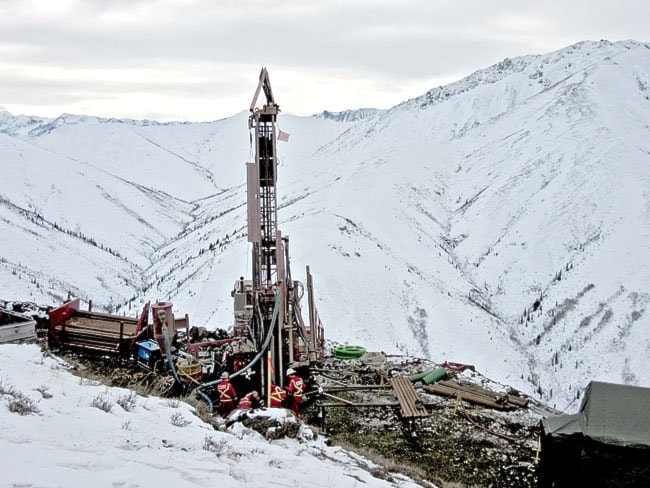Economic development is no longer a dirty word for the Kluane First Nation.
Geordan Clark is the executive director of Kluane Dana Shaw Co., the First Nation’s development corporation and business arm.
He presented at the Yukon First Nations Resource Conference this week a vision for development at a pace and scale suitable for the tiny First Nation of 250 members, of which only about 100 live in the hub of Burwash Landing.
That’s something that leadership wasn’t open to just a few years ago, he said.
He recalled, laughing, approaching chief and council in 2008 for economic development funds.
They just said no, he said.
“I was like, ‘does that mean we’re fired?’”
But in 2011 the development corporation was formed, and they started hiring their own for construction projects in the community, including a new skating rink and store.
“Rather than focus on profits ... and developing investments, we said, well let’s work with our people,” said Clark.
“Our people are the most important part of who we are. Without the people, what good is money? And without having people live in our community, who’s going to work for us, and pass on our traditions and knowledge?”
The corporation’s main focus currently is on mineral exploration and fuel services, said Clark.
“We don’t have a lot of trees there, so forestry is kind of ruled out, and there’s some wind, but you need some clients or customers to sell your wind power or hydro power. Tourism is very seasonal and small. Construction is seasonal and depends on community needs. Our intent here is saying, ‘How do we sustain ourselves over the next 100, 200 years? What do we do?
“It’s important that we create jobs outside of our First Nation office.”
The corporation has invested in several local enterprises, the most significant of which may be the Wellgreen Platinum mining project.
The site boasts one of the world’s largest undeveloped platinum deposits, and was mined briefly in the 1970s.
Wellgreen’s deal with Kluane was just the second time in Yukon’s history that a First Nation received shares in a mineral project as part of a co-operation agreement.
The company has recently released a preliminary economic assessment, planning for a $586 million mine, with a production rate of up to 50,000 tonnes per day over a 25 year mine life.
“We’ve got a very close working relationship,” said Clark.
Revenues to the First Nation in 2012, the first year of the deal, were just $900, but since then have jumped to six figures, he said.
The community is also engaged in land use planning process, so that all citizens can have a say on the long-term vision for nearly 1,000 square kilometres of settlement lands.
In order to do that, it has to first take stock of what’s out there.
Last month the First Nation inked a deal with the Yukon government to complete $583,000 geophysical survey of a section of the Kluane region just west of the Alaska Highway.
The area covers all of Kuane First Nation’s Category A settlement land, which is where they own the mineral rights, in addition to Crown land.
The First Nation chipped in $83,000, with the Yukon government putting up the rest.
That work is going to fill in one of the few remaining gaps in the Yukon for geophysical data.
The survey area overlaps the Wellgreen property, located just outside Kluane settlement land, and it could provide clues as to whether similar deposits exist nearby.
“We know that there’s a mineral deposit at Wellgreen - we know that it’s associated with a particular kind of rock, and once you can associate that kind of rock with a magnetic signature you just look for that magnetic signature elsewhere,” said Don Murphy, head of bedrock geology for the Yukon Geological Survey.
“Working with Kluane has just been extraordinary,” he said.
The partnership will probably become a model for future work with other First Nations as well, said Murphy.
“We’re quite excited, obviously. I’m probably running off my mouth with excitement, but we love getting this new kind of data. It’s great to get that kind of stuff.”
The survey is being done right now, and should be complete by the end of the month.
It involves flying a helicopter in a carefully plotted grid formation over the region, with a magnetometer sticking out the front, passively collecting data about the magnetism of the bedrock below.
The results, when they come, are going to help the Kluane First Nation make informed decisions about how to plan its land use into the future.
“We’re not in any rush to make decisions,” said Clark. “We’re just here to understand the process and make decisions once we know what we have.”
Kluane First Nation members will have a chance to give input on land use planning this summer, he said.
“Environmental stewardship is our primary goal, and protecting what we have and understanding that any work that is done is done in a good way, it meets our values and it meets our long-term objectives.”
Contact Jacqueline Ronson at
jronson@yukon-news.com
